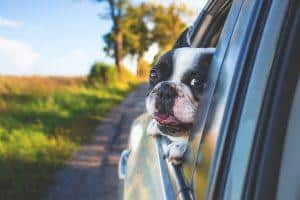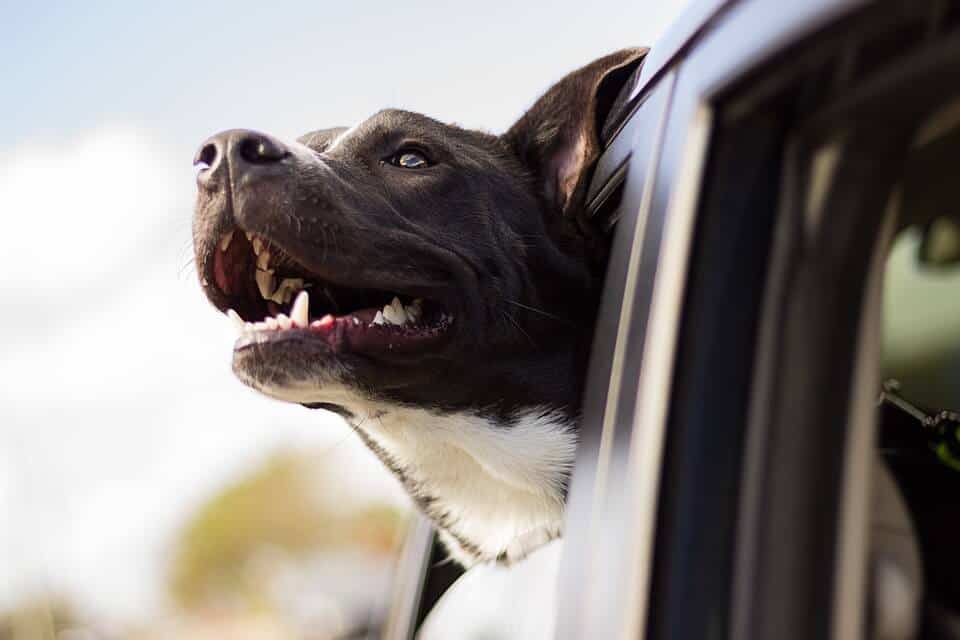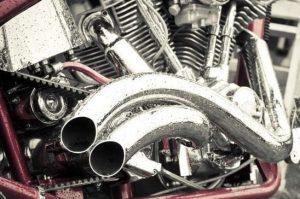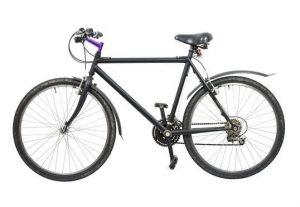
Dogs are a man’s best friend, but they can be a major distraction when you’re behind the wheel. In addition, they can suffer severe injuries in a crash, just like other family members. So, making the right decisions about keeping them safe is critical in preventing distracted driving collisions and injuries if a crash does occur.
Are Doggie Car Seats Really Necessary?
What You Need to Know About Pet Safety in Cars
If there’s one thing that almost every dog owner knows, it’s that man’s best friend loves to go for car rides. Whether it’s just a quick drive to the store or an exciting trip to the dog park, every day, millions of Americans bring their dogs along for the ride. But have you ever really wondered, “Is it safe for dogs to ride in the car?”
With millions of dogs in cars on U.S. roadways and accidents becoming an increasing concern, it’s important that pet owners understand the steps that are needed to ensure their dog’s safety in cars.
While many products on the market can keep your pets safe in the car, it can be challenging to learn which ones are necessary and what you can do to keep your pets happy and healthy on the road. This guide provides the information you need to make these decisions.

Do Dogs Have to Be Restrained in a Car?
Although there are over 83.7 million households with pets in America, the American Automobile Association (AAA) found that only 17% of dog owners reported using a safety seat to restrain their dog in the car. While using a dog seat for cars may seem like an unnecessary step in the already expensive world of pet ownership, research and testing show that restraining your dog while you’re driving is a crucial part of pet car safety.
Safety and booster seats may be helpful for smaller dogs, while tethers and crates are a better option for larger animals. Options include tethers connecting to the car seat anchors, clicking into the seatbelt buckle, or using belts to create a runner across the back seat.
Cats should generally travel in a crate and remain contained during the ride.
Resource
From Consumer Reports, here are some pet safety products and specifics, as well as a list of motion sickness medications and common remedies for dogs.
First, restraining your dog in the car will reduce the chance that your dog will distract you or unintentionally escape from the vehicle. While it might be cute to see a fluffy little dog sitting on his owner’s lap driving down the road, the dangers of this scenario become clear when you learn that over half of dog owners have admitted to petting their dog while driving and 4% even admitted to playing with their pet while also driving down the road.
Taking steps to restrain your dog and keep your eyes on the road is the first step to preventing an accident. If your dog escapes after a collision he may get lost or worse, become a danger to other vehicles on the road.
Second, if your dog is restrained when an accident occurs then the likelihood that your pet will be injured decreases drastically. Whether your dog is restrained by a special harness, crate, or other pet safety product, this will prevent your dog from hitting objects inside the car or other passengers in the event of a collision.
Fact Check
In an accident that occurs at 25 mph, a pet can be thrown forward with a force 40 times greater than its weight, hitting objects and passengers with thousands of pounds of force.
Finally, restraining your dog can help ensure that if you are in an accident, your dog will not run away before you can grab his leash. First responders recommend dog restraints as a part of basic car safety because they allow emergency personnel to attend to any injuries without worrying that a worried dog inside the car will try to protect its owner.
For a free legal consultation, call 855-623-2812
How Can I Keep My Dog Safe in the Car?
Pet safety is important, and there are many steps dog owners can take to ensure that their dogs and fellow passengers are as safe as possible.
Don’t Let Your Dog Distract You
Animals in the vehicle are a top distraction for those who travel with their pets. If they cannot be trusted to behave and stay safely in their space, they need to be restrained. Dogs and other pets may wander in the car, including in the driver’s lap, under their feet, and in other areas that prevent careful driving.
Therefore, take frequent breaks so your pet can go to the bathroom, and make sure your dog has everything it needs to be comfortable before you leave for a trip. Finally, keep your eyes on the road, and if your dog needs attention, pull over. This last step is a matter of safety for everyone in the vehicle and others on the road.
Alert First Responders About Your Dog
Some companies offer “dog on board” window signs that inform first responders to be on the lookout for your pet after an accident. However, this is not enough. When possible, you also must let them know to rescue your dog after an accident.
If you are in a collision and can speak, tell first responders that your dog is in the car and safe to approach, or it has escaped and may be in the roadway, causing a traffic danger to other vehicles. This information will help you protect your pet from any further injuries. In addition, you’ve warned first responders, allowing them to offer your pup the assistance it needs.
Keeping its leash attached to its harness or nearby and visible is also a good idea. It will signal to first responders there may be a pet in the car if they see it in the passenger seat.
Restrain Your Dog in the Car
There is a wide variety of pet safety products available for dogs of all sizes. Whether you choose a harness, a doggie car seat, or a special travel crate, restraining your dog will protect both you and your pet. Make sure that whatever you choose is properly installed and used with every trip. You can even investigate crash ratings of different products to determine what is best for you and your dog.
Unrestrained pets may suffer preventable injuries in a collision from hitting surfaces in the car, falling from the seat, or other dangers. In addition, an unrestrained pet could get hurt even when there is no impact. For example, injuries could occur when you slam on the brakes to avoid a crash.
Ensure Your Dog Has Emergency Contact Information
Your dog should always wear a collar and tag with emergency contact information and be microchipped when possible. You may also want to include information to contact a trusted friend or family member if you are unavailable. This information is vital if your pet escapes from the vehicle after a crash, or you sustain severe enough injuries that you cannot tell first responders who to call to pick up your pup.
What Happens If My Pet Sustains Injuries in an Accident?
Unfortunately, although more and more dogs are being injured in car accidents, pet owners are learning that those injuries are not always covered like a passenger’s injuries would be. While some auto insurance policies offer special coverage for pets, not all companies include this coverage automatically.
Pet health insurance may help you if your pet is injured in an accident, but each policy differs. These policies also have coverage limits and deductibles to consider. In addition, if the driver who hit you has liability coverage, it might cover your pet’s vet bills if the driver is liable, but only because your pet is considered your personal property.
In the sad cases where a pet dies, pet owners often don’t feel adequately compensated for the devastating loss of the furry family member. Contacting a lawyer can help you understand what you and your pet deserve after an accident and if compensation may be available.
Click to contact our personal injury lawyers today
Has Your Pet Been Injured in an Accident?
If you were involved in an accident with your dog in the car, you may be eligible to file a claim for vet bills and other expenses, in addition to the costs of your own injuries. Fill out our free case evaluation form to see if you can make a claim for injuries and damages. An experienced auto accident attorney at the Morris Bart law firm will assist you in the evaluation process.
Initial consultations are free, and we work on a contingency-fee-basis. Click here to see more about our office locations throughout Louisiana, Mississippi, Alabama, and Arkansas. Call us today.
Questions?Call 855-623-2812
to find a Morris Bart office near you.





